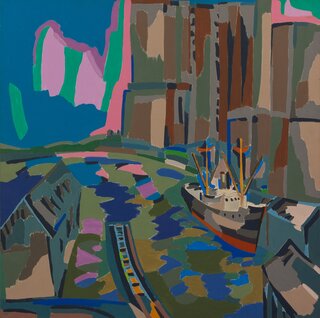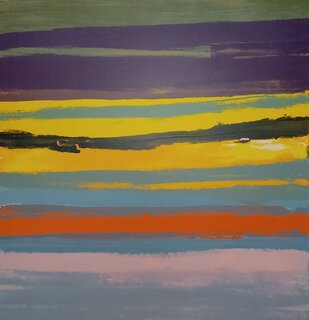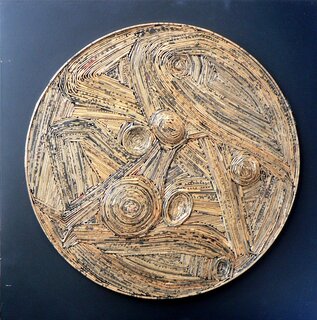
Despite Kowalska’s naïve style of painting, her strong lines, bold colours and simplified figures often disguise a more complex message in which a series of contrasting images are linked both literally and symbolically. In Shtetl - the traditional Jewish village or small town with a tightly-knit community that was common throughout eastern Europe before the Holocaust – Kowalska conjures up an archetypal scene with, at its centre, villagers gathering round the water pump. Nevertheless, the horse-drawn cart winding up a street lined with traditional, single-storey houses (a motif also used in her painting The Bridge, Ben Uri Collection) warns of a fast-disappearing way of life. Pavements and streetlights signal approaching modernisation and a church in the distance underlines the presence of the wider community. Many of Kowalska’s paintings recall her homeland and their folk-like quality, bright palette and unnatural perspective have affinities with the work of Chagall. This is one of two works by Kowalska in the Ben Uri Collection.




